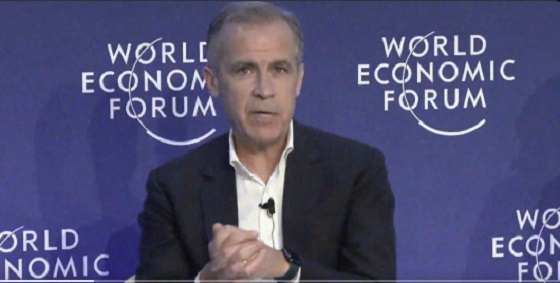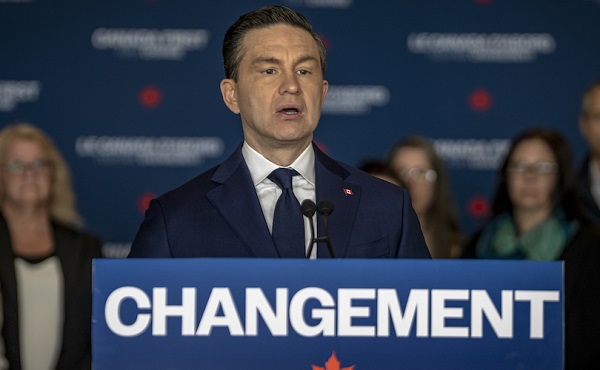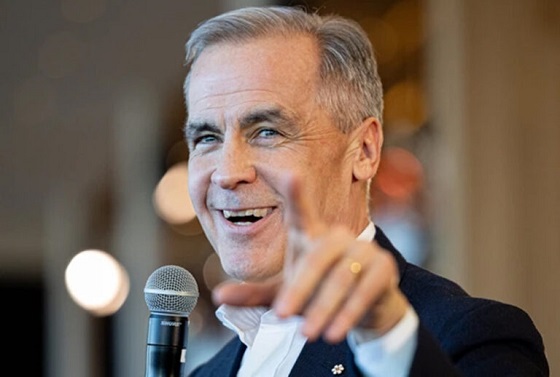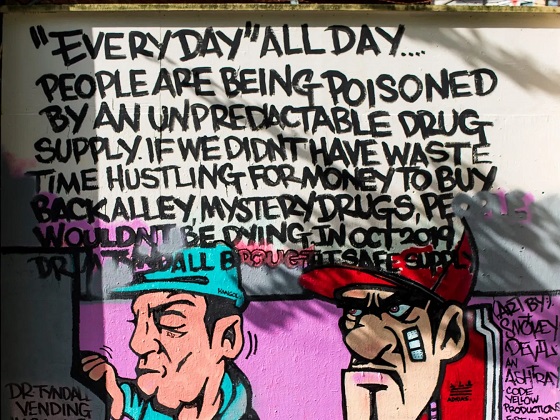National
Poilievre can pack a Rally—but can he take on the establishment, China’s influence, and the globalist elite?
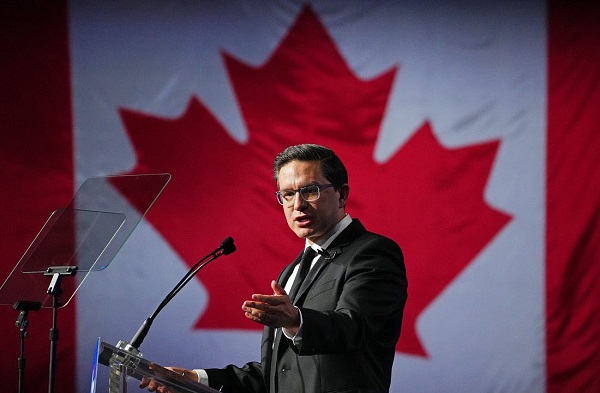
Thousands braved the cold to pack Poilievre’s rally, chanting ‘We need you!’
Pierre Poilievre didn’t just hold a rally. He delivered a political earthquake. Thousands of Canadians braved the cold—minus eleven degrees, snow falling, streets covered in ice—to stand shoulder to shoulder, packed into an overflowing venue, with even more watching from spillover rooms.
And it wasn’t just a polite gathering of voters looking for a fresh face to replace Trudeau’s tired, corrupt regime. No, this was something else entirely. It was a moment where you could feel the momentum shifting. It was the kind of rally that terrifies political elites because it tells them one thing—this isn’t just a campaign anymore. It’s a movement.
Now, we’ve seen this before. Obama in 2008, Trump in 2016. The political class and their media lapdogs always pretend these moments don’t exist—right up until the moment they steamroll the establishment and change the country forever. That’s the kind of energy we saw in Ottawa. That’s the kind of political force Poilievre is sitting on.
And the real question is: does he understand just how big this is? Because right now, he is either going to ride this wave to an unstoppable victory, or he is going to let the media, the bureaucrats, and the Liberal swamp talk him into playing it safe and blowing the biggest opportunity of his life.
Let’s talk about what he got right—because he got a lot right.
First, Mark Carney got absolutely eviscerated. And not a moment too soon. For months, the Liberal establishment and their media servants have been parading this unelected banker around like some kind of messiah—as if Canadians have been crying out for a smug, carbon-tax-obsessed globalist to come and save us from ourselves.
Well, Poilievre wasn’t having it. He torched Carney’s entire phony image in a single speech.
This is a guy—let’s be very clear about who he is—who has spent his entire career making life more expensive for you while getting richer off it. A man who cheered for the carbon tax in Canada while personally investing in American coal. A man who killed pipelines here while his own company bought them in the Middle East. A man who spent years whispering in Trudeau’s ear, pushing policies that have already driven over $500 billion in investment out of this country—and now, somehow, wants you to believe he’s the guy to fix it.
It was devastating, brutal, and completely deserved. And the best part? Poilievre made it clear that if Carney wins, Canada loses.
But that wasn’t even the most important part of the speech.
The most important moment came when Poilievre didn’t just talk about the economy—he talked about Canada’s survival.
Because that’s what this is about.
And this is where Poilievre really flipped the script on the media’s latest nonsense.
For weeks now, Canada’s press has been running around like a bunch of headless chickens, shrieking that Trump’s tariffs are going to destroy us—as if the biggest economic threat to this country isn’t the people running it into the ground from within.
And instead of taking the bait, instead of playing defense, Poilievre turned the entire argument on its head.
The real problem isn’t Trump. The real problem is that Canada can’t even trade with itself.
Think about that. Canada’s biggest economic problem isn’t some tariff threat from Washington—it’s that we have more trade barriers between our own provinces than we do with the United States. That is insane. That is deliberate economic sabotage. That is the kind of bureaucratic lunacy that only a Liberal government could create.
So instead of cowering in fear about what Trump might do, Poilievre did what no Canadian politician has done in decades—he promised to tear down interprovincial trade barriers in his first 30 days in office.
And suddenly, the entire media narrative collapsed.
Why? Because if Canada is so fragile that one American president can destroy our economy with a tariff, then maybe the real problem isn’t Trump. Maybe the real problem is that Liberal policies have left us so pathetically weak that we can’t even function as a country without America’s permission.
Now that’s leadership. That’s the kind of offensive strategy Canada needs.
And then, Poilievre did it again.
He unleashed his strongest energy vision yet.
He vowed to repeal C-69, the anti-pipeline law, within 60 days. He promised to fast-track LNG projects, restart the Ring of Fire mining industry, and put an end to the foreign-funded radical environmentalists who have spent decades deliberately crippling Canada’s energy sector while collecting cash from foreign oil interests.
The crowd exploded. Because Canadians know what’s been done to them.
This country should be an energy powerhouse. Instead, under Liberal rule, we have entire provinces collapsing under green energy scams while we import oil from countries that hate us.
Poilievre knows it. Canadians know it.
And yet, for all the things he got right, there was one glaring failure.
China.
Yes, Poilievre called China a hostile power. Yes, he promised to strengthen Arctic defenses and build a new military base in Iqaluit. That’s good. That’s necessary.
But that’s not enough.
Because Trudeau didn’t just let China threaten Canada from the outside—he let them infiltrate our democracy from the inside.
And that’s where Poilievre should have gone further.
He should have hammered the Houge Inquiry—the investigation into Chinese election interference that was so damaging that Trudeau shut down Parliament to bury it.
He should have exposed how CSIS warned the Liberals about Chinese interference—and they did nothing.
He should have pledged to ban CCP-linked companies from buying Canadian land, businesses, and resources.
He should have said, plainly and directly, that Trudeau’s government was complicit in allowing a foreign dictatorship to interfere in Canada’s democracy.
But he didn’t. And that was a mistake.
Because when you are standing in front of a roaring crowd, a movement waiting for a leader to take the gloves off, that is the moment you go all in.
Poilievre is so close. He has the passion. He has the policies. He has the momentum.
But now, he has to finish the job.
That means stop holding back on China. That means stop treating this like a normal election. That means expose the entire corrupt system—not just Trudeau, but the elites who profit off Canada’s decline.
Because the crowd is ready. The movement is here. The moment is now.
The only question is: is Poilievre ready to go all the way?
Subscribe to The Opposition with Dan Knight .
For the full experience, upgrade your subscription.
Watch the entire rally here: (Pierre begins to speak at 29:00)
Business
New federal government plans to run larger deficits and borrow more money than predecessor’s plan
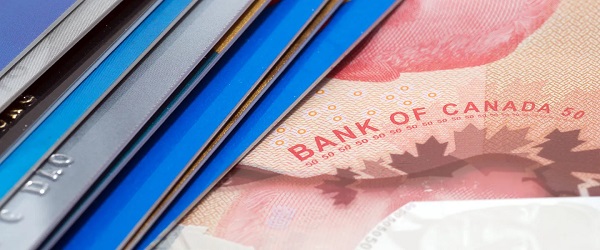
Fr0m the Fraser Institute
By Jake Fuss and Grady Munro
The only difference, despite all the rhetoric regarding change and Prime Minister Carney’s criticism of the Trudeau government’s fiscal approach, is that the Carney government plans to run larger deficits and borrow more money.
As part of his successful election campaign, Prime Minister Mark Carney promised a “very different approach” to fiscal policy than that of the Trudeau government. But when you peel back the rhetoric and look at his plan for deficits and debt, things begin to look eerily similar—if not worse.
The Carney government’s “responsible” new approach is centered around the idea of “spending less” in order to “invest more.” The government plans to separate spending into two budgets: the operating budget (which appears to include bureaucrat salaries, cash transfers and benefits) and the capital budget (which includes any spending that “builds an asset”). The government plans to balance the operating budget by 2028/29 (meaning operating spending will be fully covered by revenues) while funding the capital budget through borrowing.
Aside from the fact that this clearly complicates federal finances, this “very different” approach to spending actually represents more of the same by continuing to pursue endless borrowing and a larger role for the government in the economy.
The chart below compares projected annual federal budget balances for the next four years, from both the 2024 Fall Economic Statement (FES)—the Trudeau government’s last fiscal update—and the 2025 Liberal Party platform. Importantly, deficits from the 2025 platform show the overall budget balance including both operating and capital spending.

Let’s start with the similarities.
In its final fiscal update last fall, the Trudeau government planned to borrow tens of billions of dollars each year to fund annual spending, with no end in sight. Based on its election platform, the Carney government also plans to run multi-billion-dollar deficits each year with no plan to balance the overall budget. The only difference, despite all the rhetoric regarding change and Prime Minister Carney’s criticism of the Trudeau government’s fiscal approach, is that the Carney government plans to run larger deficits and borrow more money.
In the current fiscal year (2025/26) the Trudeau government had planned to run a $42.2 billion deficit. The Carney government now plans to increase that deficit to $62.3 billion. Trudeau’s most recent fiscal plan forecasted annual deficits from 2025/26 to 2028/29 representing a cumulative $131.4 billion in federal government borrowing. Over that same period, the Carney government now plans to borrow a cumulative $224.8 billion.
The Carney government’s fiscal plan does include a number of tax changes that are expected to lower revenues in years to come—including (but not limited to) a personal income tax cut, the elimination of the GST for some first-time homebuyers, and the cancelling of the planned capital gains tax hike. But even if you exclude these factors from the overall budget, the Carney government still plans to borrow $52.9 billion more than the Trudeau government had planned over the next four years.
By continuing (if not worsening) this same approach of endless borrowing and rising debt, the Carney government will impose real costs on Canadians. Indeed, 16-year-olds can already expect to pay an additional $29,663 in personal income taxes over their lifetime as a result of debt accumulation under the previous federal government, before accounting for the promised increases.
One of the key promises made by Prime Minister Carney is that his government will take a different approach to fiscal policy than his predecessor. While we won’t know for certain until the new government releases its first budget, it appears this approach will continue the same costly habits of endless borrowing and rising debt.
Bjorn Lomborg
How Canada Can Respond to Climate Change Smartly

From the Fraser Institute
At a time when public finances are strained, and Canada and the world are facing many problems and threats, we need to consider policy choices carefully. On climate, we should spend smartly to solve it effectively, making sure there is enough money left over for all the other challenges.
A sensible response to climate change starts with telling it as it is. We are bombarded with doom-mongering that is too often just plain wrong. Climate change is a problem but it’s not the end of the world.
Yet the overheated rhetoric has convinced governments to spend taxpayer funds heavily on subsidizing current, inefficient solutions. In 2024, the world spent a record-setting CAD$3 trillion on the green energy transition. Taxpayers are directly and indirectly subsidizing millions of wind turbines and solar panels that do little for climate change but line the coffers of green energy companies.
We need to do better and invest more in the only realistic solution to climate change: low-carbon energy research and development. Studies indicate that every dollar invested in green R&D can prevent $11 in long-term climate damages, making it the most effective long-term global climate policy.
Throughout history, humanity has tackled major challenges not by imposing restrictions but by innovating and developing transformative technologies. We didn’t address 1950s air pollution in Los Angeles by banning cars but by creating the catalytic converter. We didn’t combat hunger by urging people to eat less, but through the 1960s Green Revolution that innovated high-yielding varieties to grow much more food.
In 1980, after the oil price shocks, the rich world spent more than 8 cents of every $100 of GDP on green R&D to find energy alternatives. As fossil fuels became cheap again, investment dropped. When climate concern grew, we forgot innovation and instead the focus shifted to subsidizing existing, ineffective solar and wind.
In 2015, governments promised to double green R&D spending by 2020, but did no such thing. By 2023, the rich world still wasn’t back to spending even 4 cents out of every $100 of GDP.
Globally, the rich world spends just CAD$35 billion on green R&D — one-hundredth of overall “green” spending. We should increase this four-fold to about $140 billion a year. Canada’s share would be less than $5 billion a year, less than a tenth of its 2024 CAD$50 billion energy transition spending.
This would allow us to accelerate green innovation and bring forward the day green becomes cheaper than fossil fuels. Breakthroughs are needed in many areas. Take nuclear power. Right now, it is way too expensive, largely because extensive regulations force the production of every new power plant into what essentially becomes a unique, eye-wateringly expensive, extravagant artwork.
The next generation of nuclear power would work on small, modular reactors that get type approval in the production stage and then get produced by the thousand at low cost. The merits of this approach are obvious: we don’t have a bureaucracy that, at a huge cost, certifies every consumer’s cellphone when it is bought. We don’t see every airport making ridiculously burdensome requirements for every newly built airplane. Instead, they both get type-approved and then mass-produced.
We should support the innovation of so-called fourth-generation nuclear power, because if Canadian innovation can make nuclear energy cheaper than fossil fuels, everyone in the world will be able to make the switch—not just rich, well-meaning Canadians, but China, India, and countries across Africa.
Of course, we don’t know if fourth-generation nuclear will work out. That is the nature of innovation. But with smarter spending on R&D, we can afford to focus on many potential technologies. We should consider investing in innovation to grow hydrogen production along with water purification, next-generation battery technology, growing algae on the ocean surface producing CO₂-free oil (a proposal from the decoder of the human genome, Craig Venter), CO₂ extraction, fusion, second-generation biofuels, and thousands of other potential areas.
We must stop believing that spending ever-more money subsidizing still-inefficient technology is going to be a major part of the climate solution. Telling voters across the world for many decades to be poorer, colder, less comfortable, with less meat, fewer cars and no plane travel will never work, and will certainly not be copied by China, India and Africa. What will work is innovating a future where green is cheaper.
Innovation needs to be the cornerstone of our climate policy. Secondly, we need to invest in adaptation. Adaptive infrastructure like green areas and water features help cool cities during heatwaves. Farmers already adapt their practices to suit changing climates. As temperatures rise, farmers plant earlier, with better-adapted varieties or change what they grow, allowing the world to be ever-better fed.
Adaptation has often been overlooked in climate change policy, or derided as a distraction from reducing emissions. The truth is it’s a crucial part of avoiding large parts of the climate problem.
Along with innovation and adaptation, the third climate policy is to drive human development. Lifting communities out of poverty and making them flourish is not just good in and of itself — it is also a defense against rising temperatures. Eliminating poverty reduces vulnerability to climate events like heat waves or hurricanes. Prosperous societies afford more healthcare, social protection, and investment in climate adaptation. Wealthy countries spend more on environmental preservation, reducing deforestation, and promoting conservation efforts.
Focusing funds on these three policy areas will mean Canada can help spark the breakthroughs that are needed to lower energy costs while reducing emissions and making future generations around the world more resilient to climate and all the other big challenges. The path to solving climate change lies in innovation, adaptation, and building prosperous economies.
-
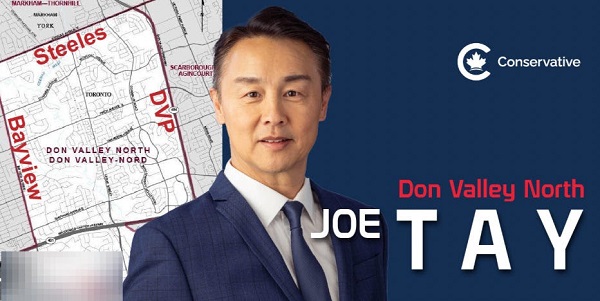
 2025 Federal Election2 days ago
2025 Federal Election2 days agoIn Defeat, Joe Tay’s Campaign Becomes a Flashpoint for Suspected Voter Intimidation in Canada
-

 Alberta2 days ago
Alberta2 days agoPremier Danielle Smith responds to election of Liberal government
-
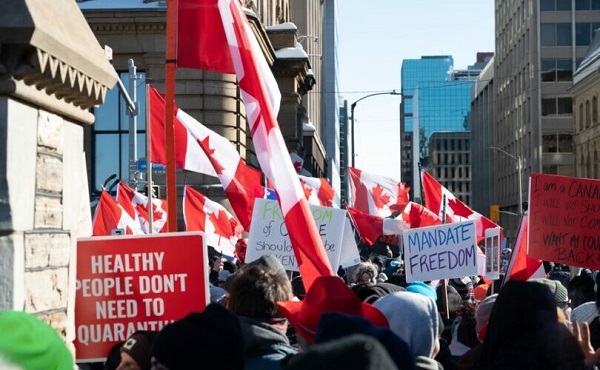
 COVID-191 day ago
COVID-191 day agoFreedom Convoy leaders’ sentencing judgment delayed, Crown wants them jailed for two years
-

 COVID-1924 hours ago
COVID-1924 hours agoCanada’s health department warns COVID vaccine injury payouts to exceed $75 million budget
-

 Banks1 day ago
Banks1 day agoTD Bank Account Closures Expose Chinese Hybrid Warfare Threat
-
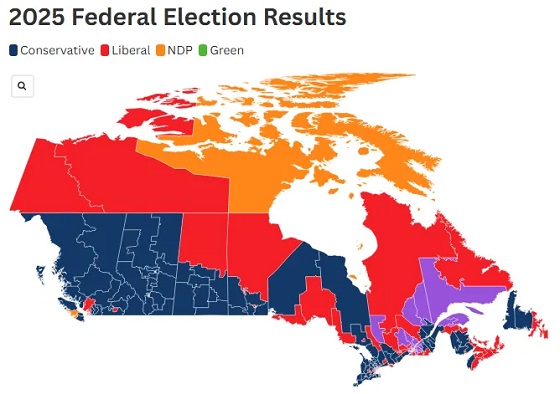
 2025 Federal Election1 day ago
2025 Federal Election1 day agoPost election…the chips fell where they fell
-
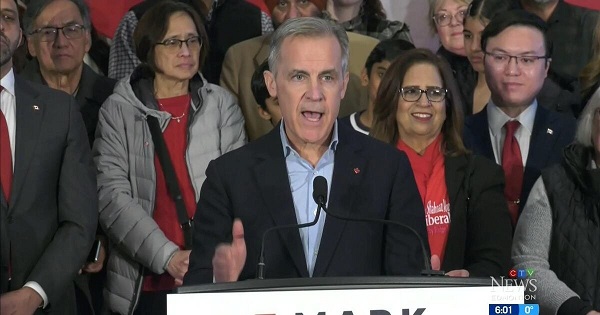
 Alberta1 day ago
Alberta1 day agoHours after Liberal election win, Alberta Prosperity Project drumming up interest in referendum
-
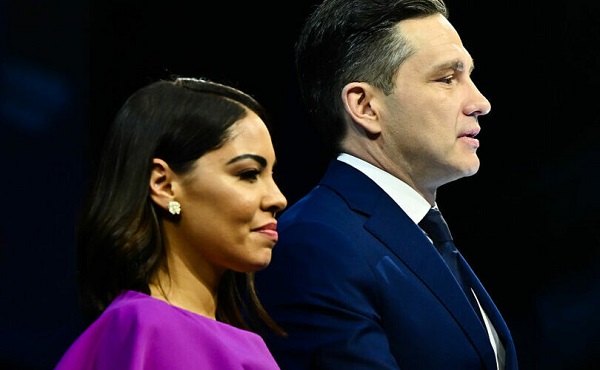
 2025 Federal Election2 days ago
2025 Federal Election2 days agoPoilievre loses seat but plans to stay on as Conservative leader




